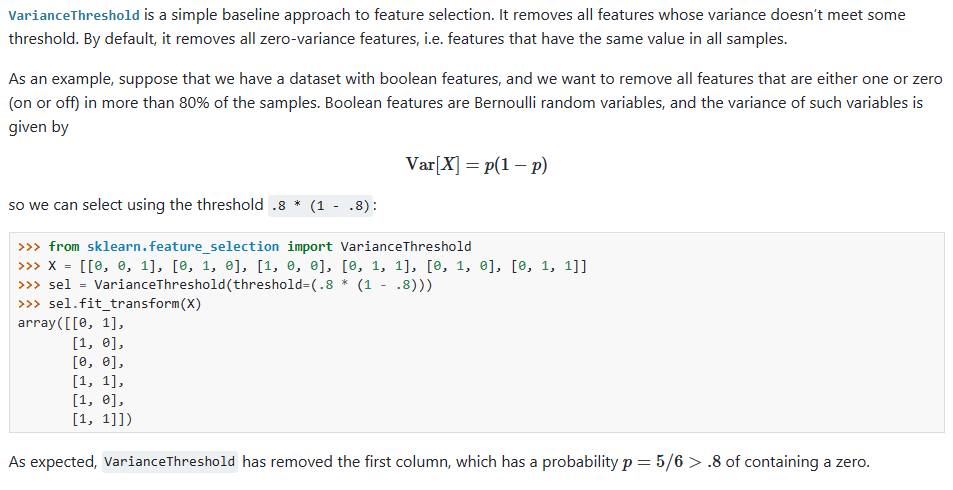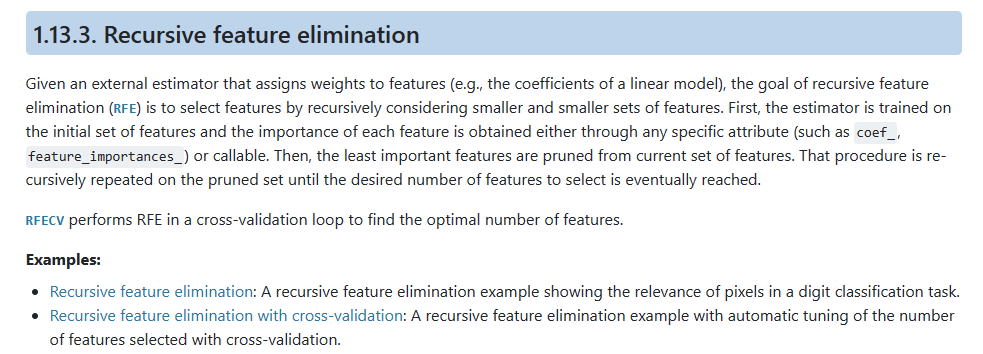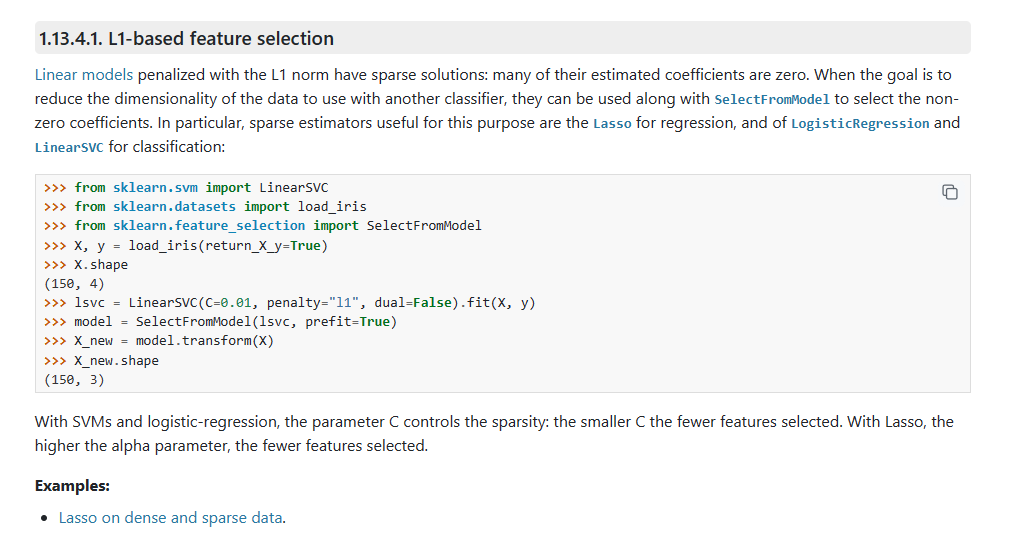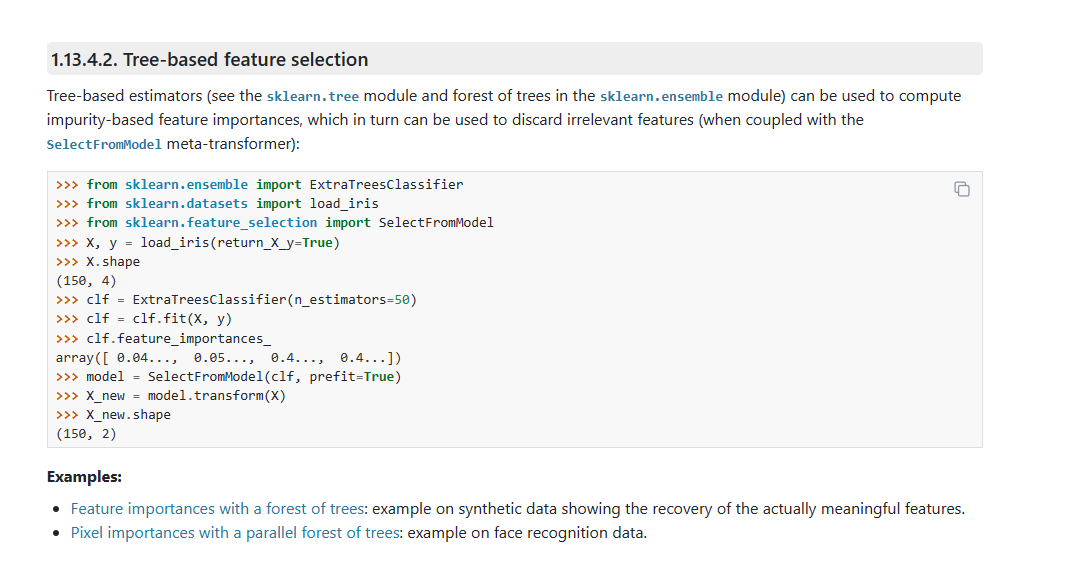参考:
Feature selection¶
1. 移除低方差的特征
方差低,说明变化不大。 将特征方差值小于一定值的特征移除

单变量特征分析
通过单特征分析,选择最好的(前k个)的特征,scikit-learn 提供的方法有:
-
SelectKBest removes all but the highest scoring features
-
SelectPercentile removes all but a user-specified highest scoring percentage of featuresusing common univariate statistical tests for each feature: false positive rate SelectFpr, false discovery rate SelectFdr, or family wise error SelectFwe.
-
GenericUnivariateSelect allows to perform univariate feature selection with a configurable strategy. This allows to select the best univariate selection strategy with hyper-parameter search estimator.
from sklearn.datasets import load_iris
from sklearn.feature_selection import SelectKBest
from sklearn.feature_selection import f_classif
X, y = load_iris(return_X_y=True)
X.shape
X_new = SelectKBest(f_classif, k=2).fit_transform(X, y)
X_new.shape

example
https://scikit-learn.org/stable/auto_examples/feature_selection/plot_feature_selection.html#sphx-glr-download-auto-examples-feature-selection-plot-feature-selection-py
递归特征消除
给定一个为特征分配权重的外部估计器(例如,线性模型的系数),递归特征消除(RFE)的目标是通过递归地考虑越来越小的特征集来选择特征。首先,在初始特征集上训练估计器,并通过任何特定属性(如coef_, feature_importances_)或可调用属性获得每个特征的重要性。然后,从当前特征集中修剪最不重要的特征。该过程在已修剪的集合上递归重复,直到所需的数目。

使用SelectFromMode进行特征选择
SelectFromModel是一个元转换器,可以与任何通过特定属性(如coef_, feature_importances_)或在拟合后通过一个可调用的importance_getter来为每个特性分配重要性的估计器一起使用。如果特征值的相应重要性低于所提供的阈值参数,则认为特征不重要并将其删除。除了以数字方式指定阈值之外,还有使用字符串参数查找阈值的内置启发式方法。可用的启发式方法是“平均值”、“中位数”和它们的浮点倍数,如“0.1*mea”。








)

)
介绍(一种用于存储数据的技术,通过将数据分布在多个硬盘驱动器上,以提高数据的可靠性和性能))




| 韧性系统的16大指导原则)


)

)